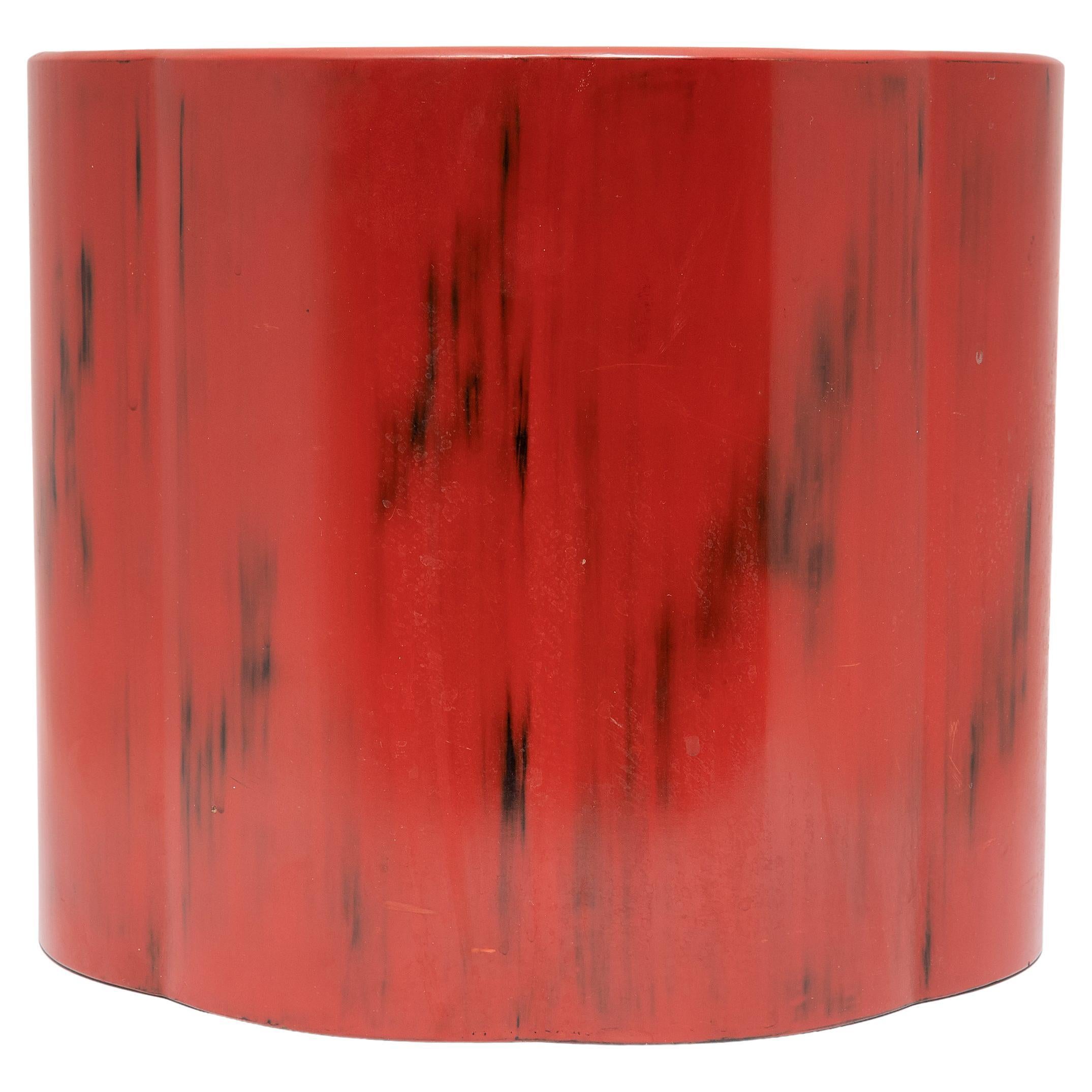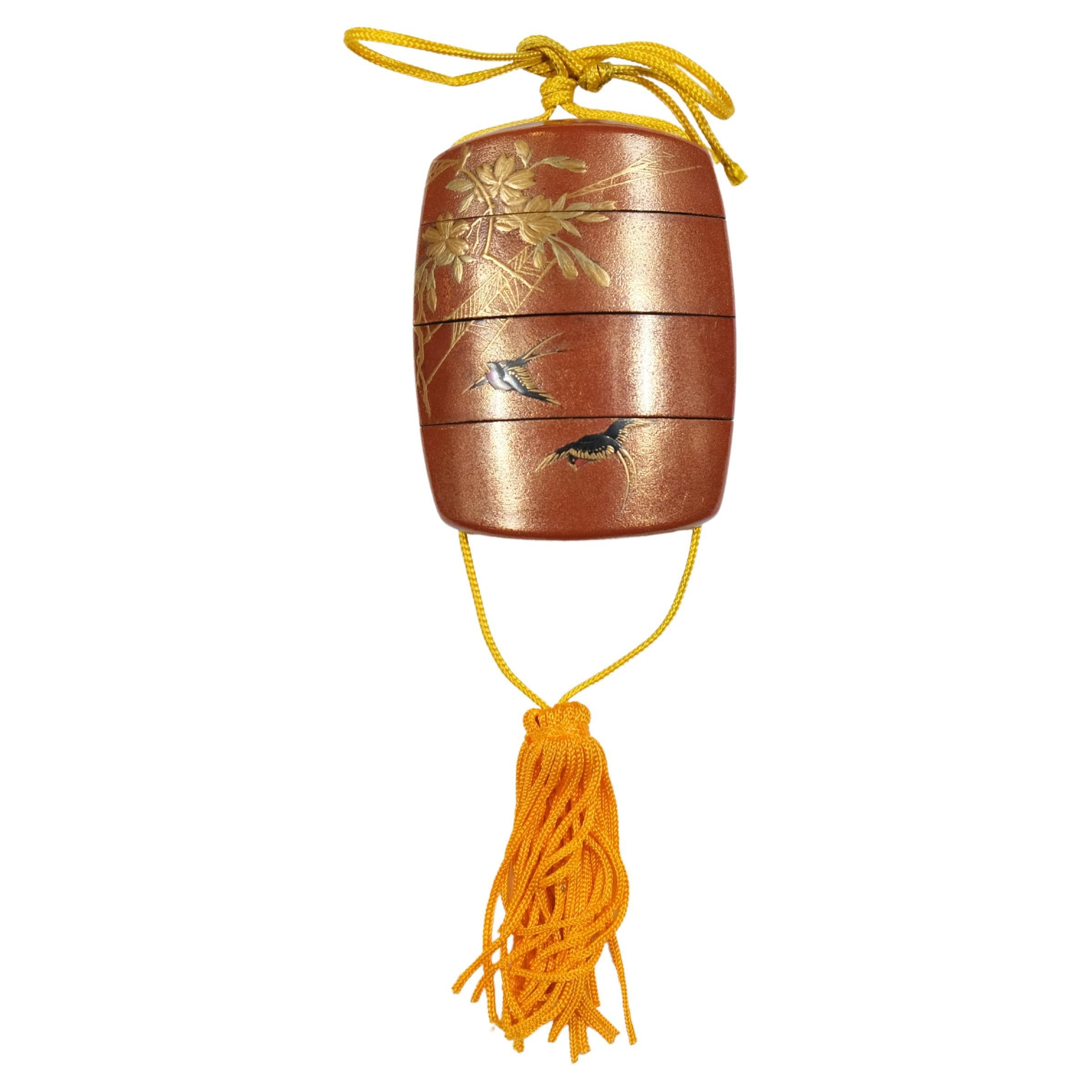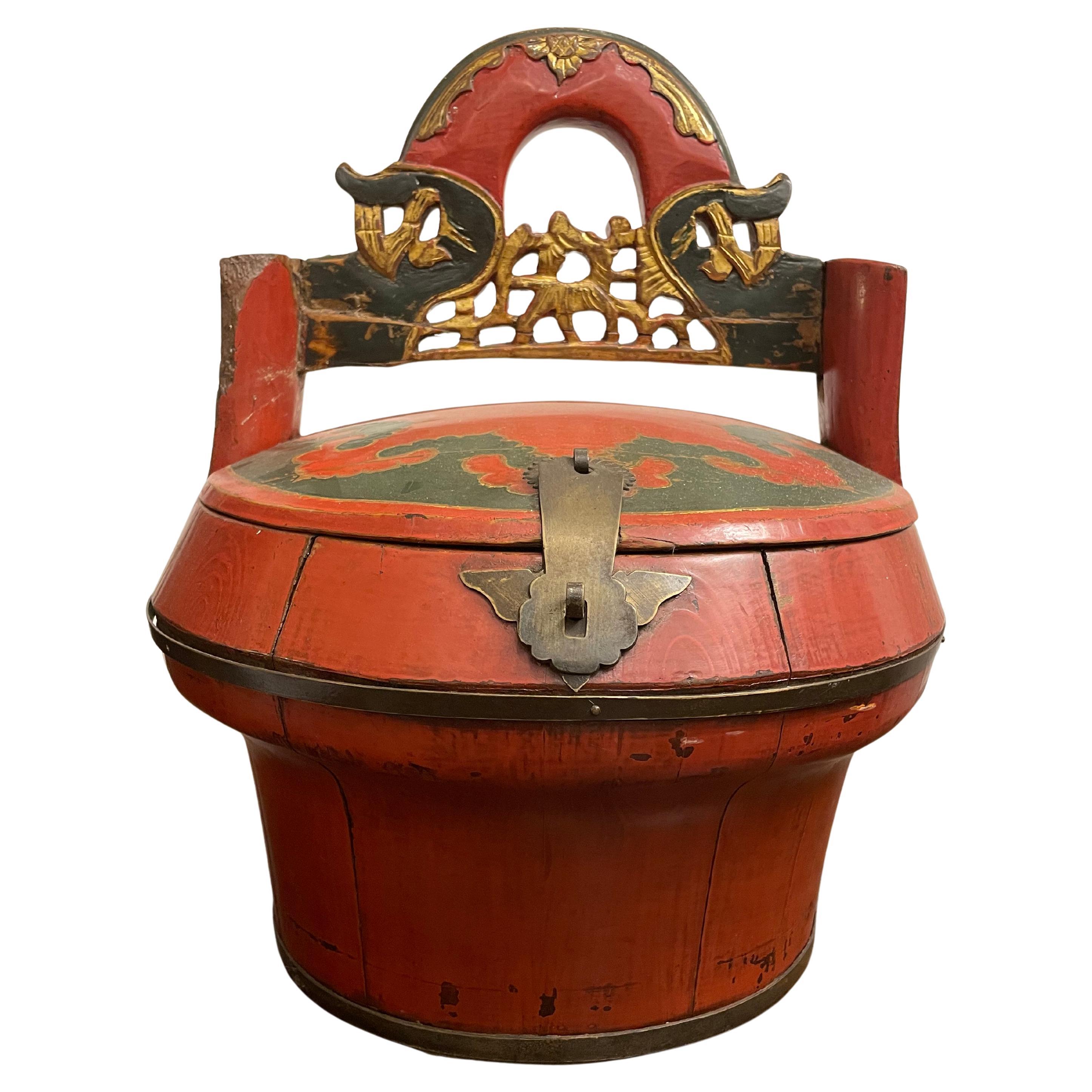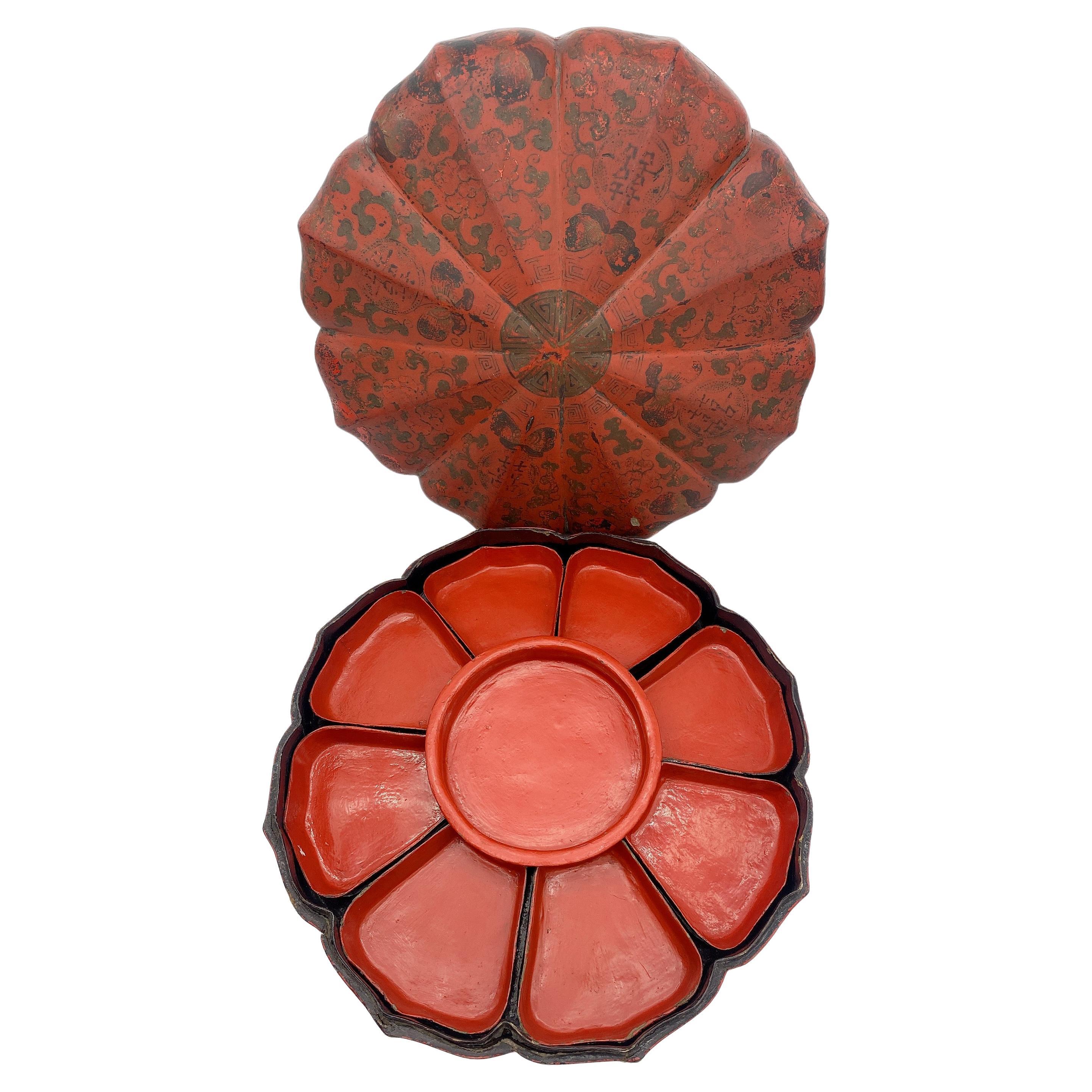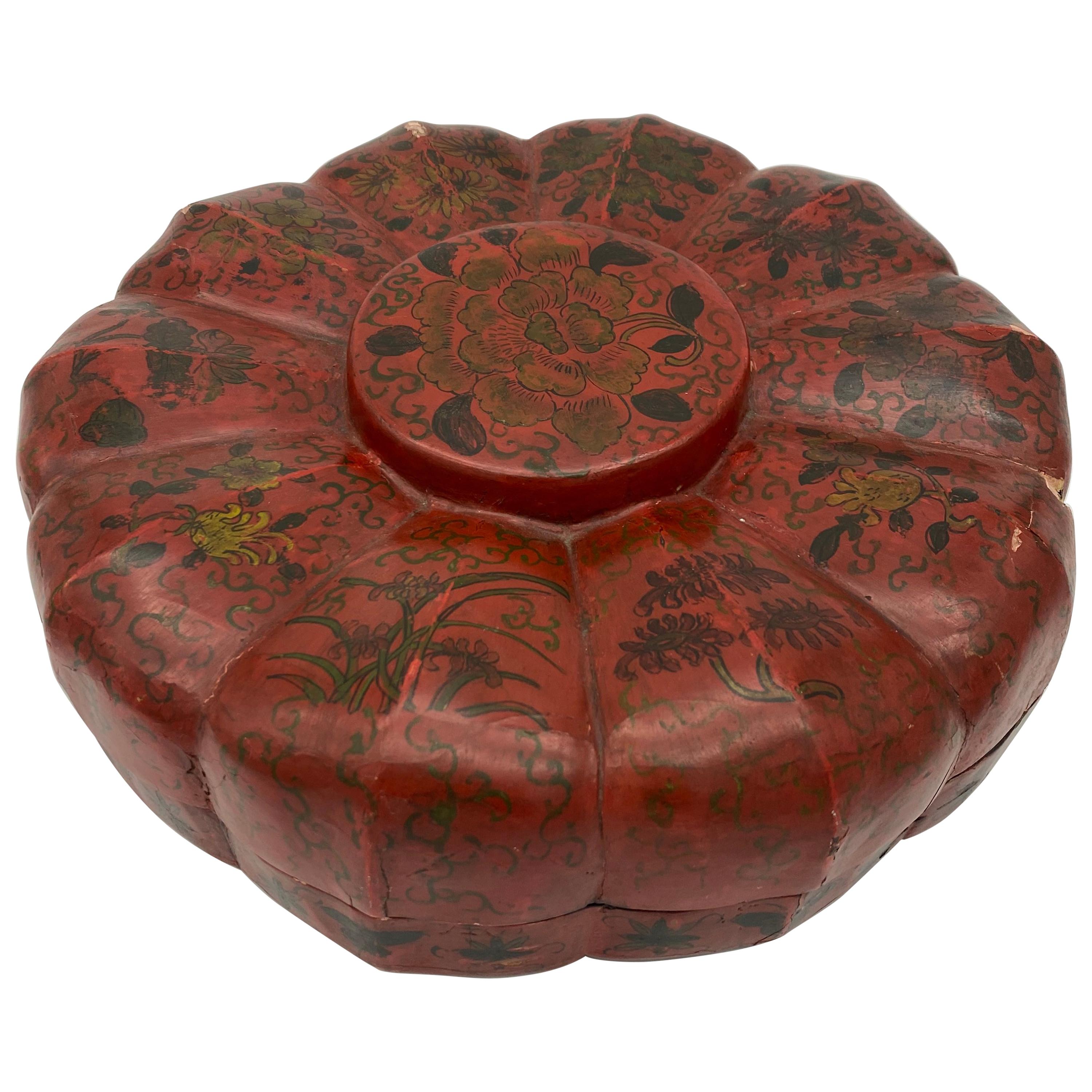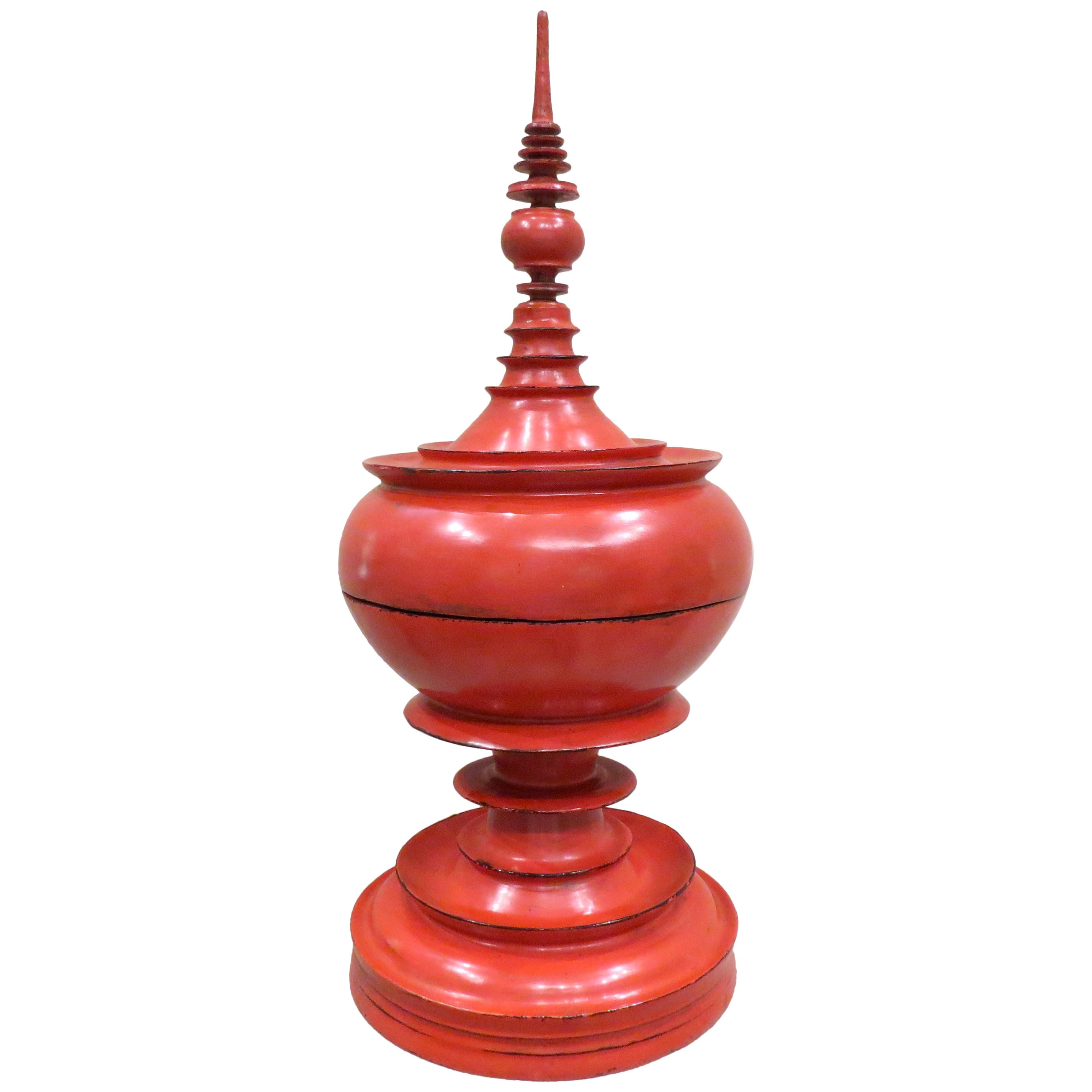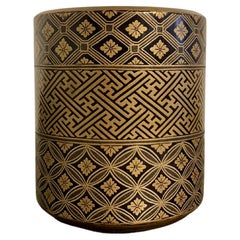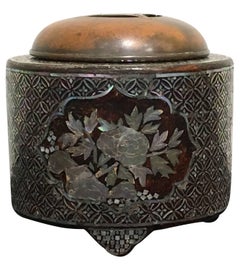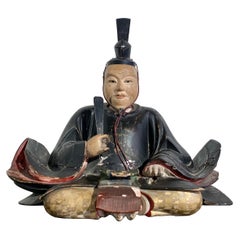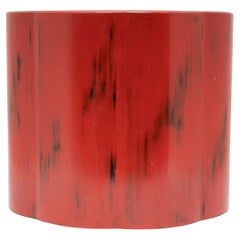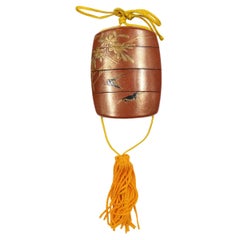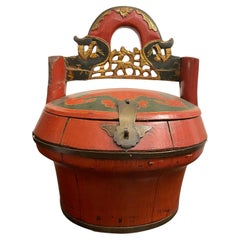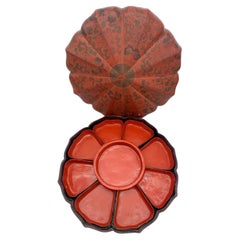Items Similar to Japanese Carved Cinnabar Lacquer Inro, Meiji Period, late 19th c, Japan
Want more images or videos?
Request additional images or videos from the seller
1 of 12
Japanese Carved Cinnabar Lacquer Inro, Meiji Period, late 19th c, Japan
$2,300
£1,746.12
€1,997.19
CA$3,213.43
A$3,574.04
CHF 1,866.25
MX$43,492.26
NOK 23,834.89
SEK 22,352.92
DKK 14,905.79
Shipping
Retrieving quote...The 1stDibs Promise:
Authenticity Guarantee,
Money-Back Guarantee,
24-Hour Cancellation
About the Item
A good Japanese carved cinnabar three case inro with mixed metal ojime, Meiji period, late 19th century, Japan.
The three case inro of standard form, comprised of three container sections and a cover, strung on a red silk cord, and secured with a mixed metal ojime bead.
The inro carved all over in a dense geometric pattern of octagons, each with a carved blossom in the center, and rhombuses to the corners. This pattern is based on a brocade pattern, called kikko, representing longevity. The octagonal shape is thought to resemble the patterning of a tortoise shell. Tortoises are symbols of longevity in Japan.
The interior compartments of the case with a maki-e lacquer nashiji ground for the risers, vermillion red lacquer for the compartment interiors, and a gold lacquer ground, fudame, for the rims and shoulders.
The mixed metal ojime slide of cylindrical shape with a checked pattern of mixed metals. This pattern is also based on a brocade pattern, and is known as ichimatsu.
Inro are a uniquely Japanese object. Because traditional Japanese kimono do not have pockets, inro were developed to hold personal seals, medicine, and other small items. They were hung from the obi, and secured with netsuke and ojime. While functional, they also served as symbols of status, wealth, and power. Inro were almost certainly the inspiration for the small vanity cases, necessaires, that were developed and popularized in the Art Deco period.
- Dimensions:Height: 3 in (7.62 cm)Width: 2.25 in (5.72 cm)Depth: 0.63 in (1.61 cm)
- Style:Meiji (Of the Period)
- Materials and Techniques:
- Place of Origin:
- Period:
- Date of Manufacture:late 19th century
- Condition:Wear consistent with age and use. Minor fading. In overall good condition, with some dark staining to the recesses. The silk cord a later replacement. The ojime tarnished. Minor wear to the gold lacquer shoulders and rims, exposing the black lacquer below.
- Seller Location:Austin, TX
- Reference Number:1stDibs: LU894734933952
About the Seller
5.0
Platinum Seller
Premium sellers with a 4.7+ rating and 24-hour response times
Established in 2001
1stDibs seller since 2010
345 sales on 1stDibs
Typical response time: <1 hour
- ShippingRetrieving quote...Shipping from: Austin, TX
- Return Policy
Authenticity Guarantee
In the unlikely event there’s an issue with an item’s authenticity, contact us within 1 year for a full refund. DetailsMoney-Back Guarantee
If your item is not as described, is damaged in transit, or does not arrive, contact us within 7 days for a full refund. Details24-Hour Cancellation
You have a 24-hour grace period in which to reconsider your purchase, with no questions asked.Vetted Professional Sellers
Our world-class sellers must adhere to strict standards for service and quality, maintaining the integrity of our listings.Price-Match Guarantee
If you find that a seller listed the same item for a lower price elsewhere, we’ll match it.Trusted Global Delivery
Our best-in-class carrier network provides specialized shipping options worldwide, including custom delivery.More From This Seller
View AllJapanese Lacquer Incense Burner, Koro, Edo period, mid 19th century, Japan
Located in Austin, TX
An elegant and refined Japanese lacquer koro, incense burner, in the form of a chaire, tea caddy, Edo Perio, mid 19th century, Japan.
The barrel shaped koro formed as a traditional ...
Category
Antique Mid-19th Century Japanese Edo Lacquer
Materials
Copper
Japanese Lacquer Writing Box, Suzuribako, Edo Period, 18th Century, Japan
Located in Austin, TX
An exceptionally fine and unusual Japanese lacquer writing implements box, suzuribako, in the form of a zither, koto, Edo Period, 18th century, Japan. With a modern wood storage box,...
Category
Antique 18th Century Japanese Edo Lacquer
Materials
Gold, Silver, Copper
Japanese Edo Period Lacquer and Mother-of-Pearl Embellished Stoneware Koro
Located in Austin, TX
A highly unusual Japanese crackle glazed koro (incense burner or censer), lacquered and inlaid with mother-of-pearl embellishment, signed Gyokusen, Ed...
Category
Antique 19th Century Japanese Edo Scholar's Objects
Materials
Copper
Japanese Carved and Lacquered Wood Shogun, Edo Period, 19th Century, Japan
Located in Austin, TX
An unusual Japanese carved wood, lacquer, and gilt decorated portrait sculpture of a shogun, Edo Period, early 19th century, Japan.
The unidentified shogun (possibly Tokugawa Iey...
Category
Antique Mid-19th Century Japanese Edo Sculptures and Carvings
Materials
Wood, Lacquer
Chinese Carved Longyan Wood Stand, Late Qing Dynasty
Located in Austin, TX
An exquisite late Qing dynasty display Stand of longyan wood, carved as a miniature "kang" table.
The center panel features an amazing grain that delights the eye, while a soft glo...
Category
Antique Early 1900s Chinese Qing Scholar's Objects
Materials
Fruitwood
Japanese Stacking Incense Box, Ju-Kobako, Meiji Period, Mid 19th century, Japan
Located in Austin, TX
An exquisite small Japanese maki-e lacquer stacking box for incense and accessories, ju-kobako, late Edo or early Meiji Period, mid 19th century, Japan.
Crafted in maki-e lacquer an...
Category
Antique Mid-19th Century Japanese Meiji Lacquer
Materials
Silver
You May Also Like
Japanese Red Lacquer Hibachi, c. 1900
Located in Chicago, IL
Designed to hold glowing embers, hibachi vessels were used for cooking or as a source of heat in Japanese homes. Placed under a low wood kotatsu table wi...
Category
Early 20th Century Japanese Meiji Lacquer
Materials
Copper
Lacquer inro, Japanese, Late 19th c.
Located in Stockholm, SE
A fourpart Japanese lacquer Inro. the lacquer is red with motives of a spider with its web in gold and two flying cranes. The lowest part of the inro has a crack on one side.
Category
Antique Late 19th Century Japanese Lacquer
Materials
Lacquer
A Chinese Hand-Carved Red Lacquered Basket with Handle, Late 19th Century
Located in ARMADALE, VIC
A Chinese Hand-Carved Red Lacquered Basket with Handle, Late 19th Century
Provenance: Private Australian Collection.
Dimension: Height: 31cm Width: 27cm Depth: 30cm.
Category
Antique Late 19th Century Chinese Qing Lacquer
Materials
Wood
$572 Sale Price
20% Off
Free Shipping
Qing Dynasty Chinese Wooden Red Lacquered Presentation Box
Located in Brea, CA
Qing Dynasty Chinese wooden red lacquered presentation box, lovely and beautiful red lacquer box with popular snacks like roasted melon seeds, dried fruit, this auspicious objects ar...
Category
Antique Mid-19th Century Chinese Qing Lacquer
Materials
Lacquer
Qing Dynasty Chinese Red Lacquer Box
Located in Brea, CA
Chinese red lacquer box from Qing dynasty. Includes nine-pieces. Before in excellent condition. But when I take pictures, accidentally fell t...
Category
Antique Early 17th Century Chinese Qing Lacquer
Materials
Lacquer
Late 19th Century Burmese Red Lacquer Offering Vessel "Hsunok"
Located in Torino, IT
Late 19th century Burmese
red lacquer special
ceremonial offering vessel.
Detailed spire form the top of
the lid, stepped curved ring
molded bowl above round
base. Multiple lay...
Category
Antique 19th Century Burmese Lacquer
Materials
Wood
More Ways To Browse
Red Lacquer Furniture
Art Deco Lacquer Furniture
Japanese Carved
Antique Carved Japanese Furniture
Japanese Art Deco
Japanese Kimono
Lacquer Cylinder
Japanese Used Kimono
19th Century Japanese Carved Furniture
Japanese Containers
Antique Japanese Seals
Meiji Silk
Kimono Gold Japanese
Japanese Shell Art
Japanese Obi
Lacquered Octagon
Maki E
Japanese Netsuke
